The skin of your hands needs renewal no less than the skin of your face and body. But this area has a number of specific features that you need to be aware of before you start exfoliating. You will find details and cosmetics that may be useful in this article.
- Features of peeling for hand skin
- What kind of peeling is there?
- Hand peeling at home
- Professional peeling in the salon
- Review of hand peeling products
Features of peeling for hand skin
The skin of the hands is thin, practically devoid of sebaceous glands and is always exposed to the sun and other environmental factors, which means it is susceptible to photoaging. We constantly do something with our hands, wash them often, but we cannot take care of them as carefully as we do the skin of our face. And peeling is one of the ways to help the skin of your hands look decent.
Operating principle
The purpose of peeling is to exfoliate “old” cells, causing the skin to produce new ones. Thanks to this procedure, you can get rid of problems such as dryness, roughness and even age spots - with a sufficiently deep effect.
Salt, sugar, coffee - natural abrasives that are always at hand © Getty Images
Peculiarities
Peeling really works when it comes to age-related skin changes. However, the skin of the hands requires more delicate, gentle treatment. Therefore, medium and especially deep peels are usually not performed here.
Efficiency
Even a simple home exfoliation with a scrub makes your hands smooth and soft. But it must be carried out regularly, since the skin of the hands is prone to dryness, as it is constantly in contact with aggressive environmental factors.
What kind of peeling is there?
Exfoliation is done in two main ways.
Chemical
In the price list of a clinic or beauty salon, you may find a chemical peeling procedure for the skin of the hands, but this is rather an exception to the rule. This procedure is prescribed only for obvious age-related changes - for example, pigment spots, when mechanical exfoliation is not enough. Usually in such cases, superficial acid peeling is carried out in a course of procedures.
Mechanical
Salon hand care, especially if it is a spa program, always involves mechanical peeling, or, more simply, scrubbing. The scrub will remove dead cells and prepare the skin for subsequent care, increasing its effectiveness. Therefore, after the scrub, a hand mask must be applied. This procedure can be carried out at home.
Hand care begins with a bath © Getty Images
Hand peeling at home
This procedure will not only make your hand skin smooth, but will also give you pleasure.
Preparation
Make a hand bath by adding a couple of drops of your favorite essential oil or scented liquid soap. The water should be warm, comfortable temperature. Dip your hands into the water for literally half a minute. If you don't have time, just wash your hands, but don't dry them. The scrub is applied to damp skin.
Peeling
The main question is what products to use to exfoliate the skin of your hands, because special products for this are rarely produced. Alternatively you can use:
natural abrasives from household items (coffee grounds mixed with olive oil, sea salt, sugar);
scrubs for body or face skin.
Post-peeling care
After exfoliating, apply the cream generously to your hands and then briefly put on cotton gloves to give your hands the intense nourishing care they need.
Professional peeling in the salon
In salon care, peeling is part of the hand care ritual. It consists of several stages, including cleansing, massage, mask, protective cream.
Exfoliation softens the skin of the hands © Getty Images
As for chemical peeling, this is a fairly rare procedure, but it is also in demand among those who are struggling with the effects of photoaging. A course of glycolic peeling can cope with this task, but only a cosmetologist has the right to prescribe it strictly according to indications.
Review of hand peeling products
We have chosen for you scrubs with soft exfoliating particles and oils that care for the skin during peeling.
Precious beauty scrub, Garnier
The composition contains four vegetable oils and cupuaçu tree seeds. Works gently and moisturizes, suitable for thin skin. More about the product
Body scrub Soy Milk & Honey Body Polish Creme de Corps, Kiehl’s
Jojoba oil, honey and soy protein soften and nourish skin while fine loofah particles exfoliate dead skin cells. More about the product
Sugar facial scrub, nourishing, L’Oréal Paris
The product, based on three types of sugar, is enriched with cocoa and coconut oils, exfoliates dead cells, simultaneously nourishing and softening the epidermis. Just what demanding hand skin needs. More about the product
Soft facial scrub, La Roche-Posay
It is addressed to sensitive facial skin, which means it is also suitable for hand skin. It is gentle to handle, does not contain soap and has a physiological pH. More about the product
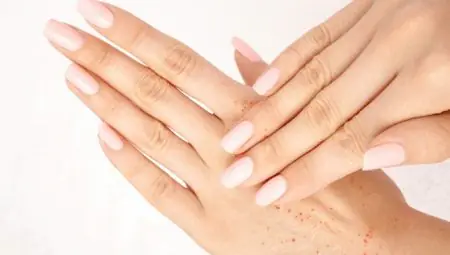
join the discussion
Share with your friends
Perhaps nothing shows a woman’s true age more than her hands. Lack of proper care, sun and wind, chlorinated water and cleaning products have the most detrimental effect on the skin. But this is not a reason to despair - it is possible to turn back time. To do this, you only need to carry out the peeling procedure once a week, and then very soon your hands will become soft and velvety again.
What is peeling?
From a technical point of view, peeling is a simple polishing of the skin, in which a layer of dead cells is exfoliated, thereby improving blood circulation and creating a rejuvenating effect.
Procedures can be deep, medium and superficial, and the more layers of skin are removed, the deeper the peeling is considered.
As a simple skincare procedure, superficial exfoliation is sufficient, but for more significant problems, such as age-related changes, burns or scars, a deep effect is necessary.
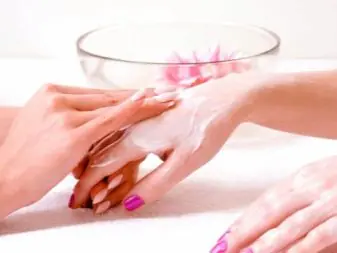
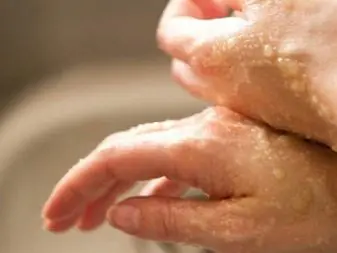
Salon peeling
Peeling is most often done in salons; it is one of the most popular procedures on the cosmetic services market.
With age, a woman’s body begins to change, unfortunately, not for the better. The skin becomes dry, which leads to the appearance of unsightly wrinkles. In addition, many representatives of the fair sex are faced with such an unpleasant phenomenon as age spots - these and other problems bring to the fore the task of maintaining the attractiveness of the skin on their hands. Effective salon procedures can help with this.
Depending on the type of exposure, there are several types of peeling:
- mechanical – in this case, the main effect is carried out by a cosmetologist with his own hands using special exfoliating agents;
- hardware – such care is carried out using ultrasound, laser or cryotherapy;
- chemical – involves the use of various fruit acids.
A professional cosmetologist selects the option of procedures that are optimal for each specific skin type.

Chemical
Acid peeling is based on the action of acids, which help effectively fight the first signs of skin aging. After their use, the skin gets burned, but the stronger the burn, the faster the regeneration of the integument will begin.
This procedure requires little preparation. 2 weeks before the session, you should stop any ultraviolet treatments, including visiting the solarium. If contact with sunlight cannot be avoided, then it makes sense to apply a protective coating in the form of photoprotectors with a class of at least 20SPF.
It is advisable to carry out chemical peeling in winter, when solar activity is minimal. As a rule, chemical polishing involves a medium level of exposure in several main stages:
- cleansing the treated area of skin and completely disinfecting it;
- applying several layers of the active substance, usually trichloroacetic acid is used for this;
- hydration.
To achieve the desired effect, you need a course of 5-8 procedures.
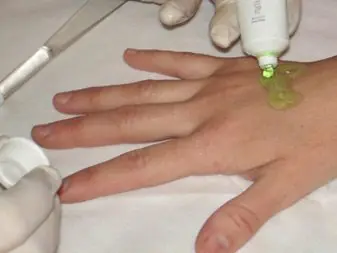
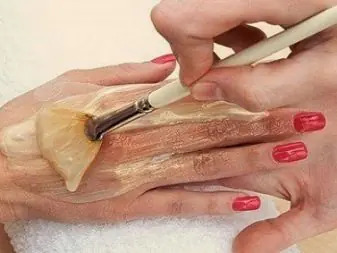
Sessions are recommended for women over 35 years of age. The main indications for chemical peeling are age-related changes. The result of visiting the salon will be smooth skin without protruding veins and wrinkles.
For girls 25-35 years old, chemical peeling is also used, but it is usually superficial, and retinoids or glycolic acids are used as the active substance. To achieve smooth skin, 2-3 sessions are usually enough.
Mechanical
At its core, this procedure is micro-resurfacing, in which the cosmetologist treats the problem area with massaging movements using an active substance, usually magnesium oxide.
This procedure is aimed at removing the surface layer of the skin, as a result of which blood circulation improves, the production of natural collagen is stimulated, and as a result, rejuvenating processes are launched.
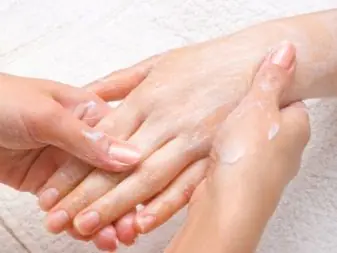
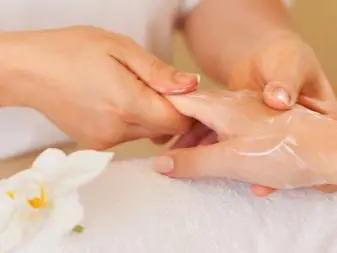
Experts recommend taking a course of at least 4 procedures, one every 7 days.
Hardware
These procedures involve the use of ultrasound, which specifically combats wrinkles and skin pigmentation disorders.
Cryotherapy, which appeared in the 60s of the last century, but has only recently received its development in cosmetology, also has a good effect.
This type of care involves the use of liquid nitrogen or dry ice. With the first method, the temperature drops to -190 degrees. Cold air, penetrating deep inside the pores, effectively dissolves all kinds of impurities and cleanses the skin. As a result of this effect, microcirculation of blood and lymph is accelerated, which leads to regeneration of the skin.
The use of dry ice involves contact with even lower temperatures - up to -700 degrees. Cosmetic cold promotes rapid rejuvenation of hands, which results in smooth and velvety hand skin without any spots, roughness or unevenness.
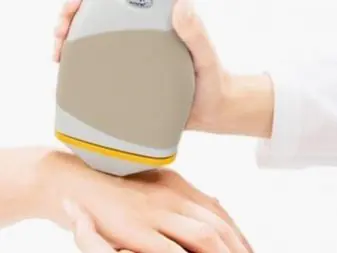
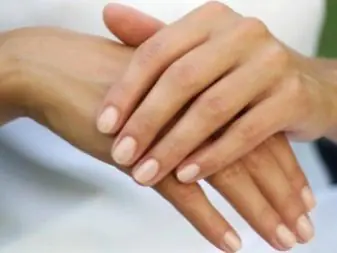
More recently, beauty salons began to offer a rather original procedure - peeling with small Garra Rufa fish. These are representatives of the carp family with a length of no more than 12 cm, which are widely used in cosmetology due to the following features:
- fish can remove dead skin layers without any mechanical damage;
- their saliva contains diethanol - this substance promotes the healing of microcracks;
- During their life, fish produce a special mucus that has a slight moisturizing effect.
To carry out the procedure, women’s legs or arms are placed in a special aquarium with warm water heated to 30-35 degrees. About 250 aquatic animals are needed for one session, and no cosmetics are used.


To achieve maximum effect, you should take a course of several similar procedures, carried out at intervals of 2-4 days.
Home peeling
Not every girl can afford to visit expensive beauty salons, but this is not a reason to despair - there are many simple, but effective peeling options that can be used without leaving home and spending a minimum of time. It is optimal if such care is carried out weekly; after achieving the desired effect, the interval between procedures should be increased to 10 days.
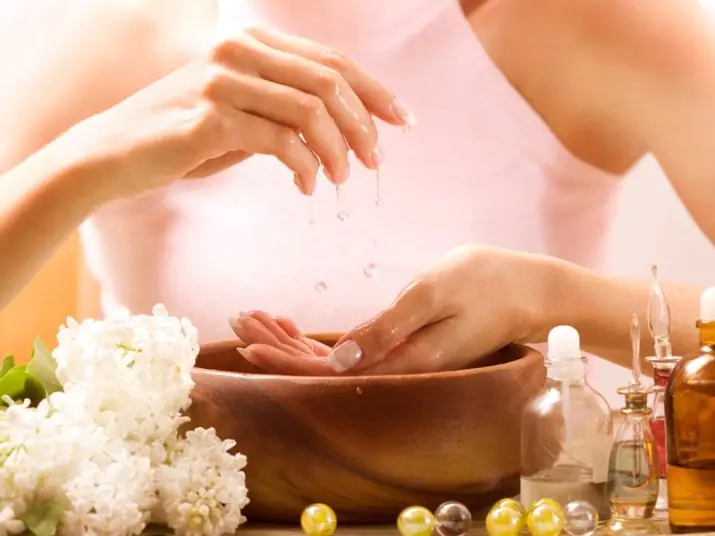
Nowadays, you can buy all the ingredients necessary for effective home peeling at any grocery store or pharmacy.
- Sugar. This simple recipe has received the maximum number of positive reviews. To carry out the procedure, you only need 1 spoon of sugar and 2 tablespoons of vegetable oil - the resulting composition should be rubbed into your hands with light massaging movements for 2-3 minutes. After which the mixture is washed off and a moisturizer is applied to the skin.
- Soda. Soda is found in every home, but few people know that it is an excellent cosmetic product. Care treatments with it help get rid of the upper stratum corneum of the skin, moisturize, get rid of dryness and even even out the tone. To carry out the procedures, mix 1 spoon of baking soda with 2 spoons of any liquid cleanser, then apply to the skin and rinse with water after a couple of minutes.
Greetings, my dear friends. Agree that there is now quite a wide choice of peelings - from deep chemical peels to delicate superficial ones. If you are not a fan of aggressive cleansing procedures, milk facial peeling is perfect for you. I’ll tell you how to make it yourself at home in this article.
What it is
Lactate or lactic acid is an organic acid. This substance is formed during the breakdown of glucose. It is present in pickles, curdled milk, wine, natural kvass and ripened cheese. But this does not mean at all that you need to rub yourself with pickles 🙂 For aesthetic medicine, lactate is released using an enzymatic reaction.
Lactanoic acid has a small molecule. It easily passes through the membrane of epidermal cells. Therefore, it provides the same effect on all areas of the skin.
Lactic acid has excellent effects on the skin:
- Helps lighten skin by influencing melanin production. Due to excessive production of this substance, age spots appear on the skin. Peeling helps neutralize these consequences.
- Enhances natural production of elastin and collagen. As a result, wrinkles are smoothed out and skin turgor increases.
- Provides anti-inflammatory effect. This is achieved due to the fact that lactate acidifies the skin.
- Antioxidant effect - acid helps reduce the aggressive effects of harmful factors (for example, ultraviolet radiation) on the skin.
- Keratolytic effect - achieved by exfoliating keratinized cells.
- Provides intense skin hydration.
The effectiveness of lactic acid peeling depends on the correct procedure technique. Cosmetologists work with a higher content of active substance. But it is also more dangerous in terms of side effects when used independently. For home use, products with a concentration of 10-15% are quite suitable.
What skin is it suitable for?
The main advantage of milk peeling is its versatility. It can be used for all skin types (sensitive is no exception). Indications for exfoliation:
- dehydration of the skin, its pallor and dullness;
- increased skin dryness, peeling;
- photoaging;
- acne;
- the presence of freckles and age spots;
- decreased skin elasticity, wrinkles, etc.
In addition, exfoliation is recommended to be carried out before performing complex salon cosmetic procedures - for example, laser resurfacing of post-acne. As you can see, milk peeling has a considerable range of purposes.
ARTICLES ON THE TOPIC:
How cosmetologists perform milk peeling
Peeling with lactate can be done in a beauty salon. Professional cosmetologists work here who will perform the procedure in the best possible way. It is advisable not to sunbathe 2 weeks before the procedure. And even in cloudy weather, you should use sunscreen cosmetic products.
Exfoliation in a beauty salon does not take much time. On average, the procedure lasts up to 45 minutes
Before starting peeling, the cosmetologist will carefully analyze the condition of the skin. And he will give recommendations on what to do after the procedure at home. For peeling, 30–80% lactic acid is used. The concentration of the active substance is selected by the cosmetologist taking into account the type and color of the skin.
Here are the photos before and after the procedure:
Protocol in cosmetology
- Cleanses the skin of cosmetic residues and dirt. For this purpose, special makeup remover gels and lotions are used.
- Afterwards, toning and degreasing are carried out. A lotion that contains fruit acids helps to achieve this effect.
- Pre-peeling procedure - used to determine the sensitivity of the skin to lactic acid. If pre-peeling is not performed, exfoliation is carried out with a minimum concentration of lactate. Only after making sure that there is no adverse reaction, the cosmetologist begins to carry out a full procedure.
- The peeling procedure itself. The drug is applied to the face, neck, and décolleté using a special brush. And leave for a certain time (from 3 to 20 minutes). The duration of exposure to lactate is individual in each case. All this time, the cosmetologist monitors the skin’s reaction.
- Next, the drug is washed off with cold water. The use of hot water at this stage is prohibited! It can react with lactate and cause skin irritation. After washing, the epidermis is dried.
- Neutralization is in progress. A composition with a neutralizing effect is applied to the entire area where exfoliation was performed.
- At the final stage of the procedure, masks are applied depending on the skin type, for example, alginate. Afterwards a nourishing cream is applied.
I picked up a video where a cosmetologist exfoliates with lactic acid. The master comments in detail on his actions, paying attention to what he is doing and why. She also gives recommendations on the drugs used, describing their composition and effect.
How often can this be done and the cost of the procedure?
The result after exfoliation (based on what the reviews say) lasts for six months. However, one procedure is not enough, although the effect will already be visible after it.
Cosmetologists recommend taking a full course of peeling every year. These are 3-6 procedures, between each of which there should be a break of 10-14 days
How much a full course of exfoliation will cost you depends on several factors. Firstly, this is the price of the drug used during the procedure. It may vary depending on the brand of cosmetic product. Secondly, the cost is influenced by the qualifications of the cosmetologist who performs this procedure. It’s better not to save money here, but to immediately contact a good specialist with experience. Naturally, this will cost more.
On average, the price of one procedure is 3,000 rubles. If this cost is too expensive, then look at the promotions on Biglion or Groupon. Very attractive offers often appear there.
Post-peeling care
The most important thing to do at home after cosmetic procedures is to take care of your skin. At first after the procedure, itching and pain may occur. These are completely normal phenomena - there are no pathologies or abnormalities here. But you shouldn't tolerate them. Hydrocortisone or fireweed extract will help relieve itching. You can cope with painful sensations with the help of ibuprofen or arnica extract.
And regular post-peeling care is required. It includes 3 stages, which are described in detail below.
Cleansing – cosmetic milk with antibacterial components will do for these purposes. These include orange oil, citric acid, green tea, etc. When the skin begins to peel, use products with small abrasive particles to care for it. They provide a light cleansing effect. The name of such products contains the word polish.
Recovery – ideal cosmetic compositions with panthenol, vitamin E and omega acids. Skin care products containing arbutin, cucumber or grapefruit extract will help prevent hyperpigmentation. Never use cosmetics with a high content of mineral oils and dimethicone silicones. They will increase skin temperature and create an ideal microclimate for bacteria to multiply.
Protection – cosmetic products with SPF protection of at least 20 will help with this. Cosmetologists also advise choosing skin care products that contain physical filters. For example, it could be zinc oxide or titanium dioxide. It will provide both UV protection and antimicrobial support.
DIY peeling at home
Nowadays, most professional products are available for free sale. On the one hand, this is good, on the other hand, the ingredients are potent. We are not taught how to use them. And we turn to the Internet for help, and then “make it” in our kitchen.
At first, I found the option of making my own peeling. Probably there is a “devil” in everyone who says: “This is a cheap product, worth a penny! Look how girls talk about him. Let's run to the pharmacy and get it done" Only later does it become clear that you have to pay for everything. Not with your wallet, but with your health.
I'll tell you about a cheap peeling recipe at home and why I don't recommend it. This is the use of lactic acid at a concentration of 80%. This is a very large percentage, which even cosmetologists do not always use. At home it is diluted with ordinary water. The percentage varies for everyone - 1:13 or 1:3. After dilution, wipe the product over the face with a cotton swab or disk for about 5-7 minutes. Then they wash their face and apply their favorite cream. And again - instantly rejuvenated 🙂
On YouTube I found only 3 reviews from girls who tried this product. Here's one of them.
This reminds me of our grandmothers’ recipe, when there was nothing and at least spread something. Dear girls, approach everything wisely. I would rather use professional cosmetics with well-chosen ingredients. In it, I am at least sure that the allergic reaction is minimized and I will not get any side effects. Yes, cosmetics are more expensive. Although no, skin restoration after homemade handmade products costs even more.
Which peeling to buy for use at home
I spent a long time selecting funds. I thought I would tell you about different manufacturers. But for now I liked the line from the brands BEAUTYMED and GIGI. These products are used by professional cosmetologists. The GIGI line includes products for skin preparation, peelings themselves with an acid concentration of 10-30% and post-care products.
Even at home, you need to follow the procedure protocol:
- Before performing the procedure, cleanse the skin using a special emulsion;
- Apply the exfoliation product to clean, dry skin, avoiding the eyelid area. This must be done with gloves. Leave for up to 5 minutes;
- then wash your face with cool water. Next, blot the epidermis and treat it with a neutralizing tonic;
- apply moisturizer.
Be extremely careful when performing this procedure. Avoid getting the drug in your eyes. If you suddenly experience a strong burning sensation during exfoliation, immediately wash your face with cool water. If the irritation does not go away within a couple of days, be sure to consult a dermatologist. Plus, a week before and during the procedure, exclude products with retinol from your care. This will prevent an increase in skin photosensitivity.
To begin with, I selected for you products with a 10% concentration of acids. For beginners this is an ideal option.
Peel Therapy Glycolic Acid Complex – this product is from the company BEAUTYMED (France). This is a 10% peeling with a healing complex. It contains: malic, lactic, tartaric, glycolic, citric and hyaluronic acids. In addition, there are extracts of blueberry, grape leaf and sugar cane. Arginine RSA is also added to the composition. Acidity level - pH 3.
This combination of ingredients is perfect for normal, pigmented and very dry skin. Exfoliates gently and renews the epidermis. The drug is sold in a 50 ml bottle. Judging by the reviews, it lasts a long time.
Peel Therapy Salicylic Acid Complex - This is already a remedy for problematic, oily and acne-prone skin. The drug has a 10% acid concentration.
The composition contains 6 acids: citric, grape, salicylic, lactic, malic and hyaluronic. The drug helps soften and regenerate the skin. And thanks to the presence of salicylic acid, it reduces pores and normalizes the oiliness of the epidermis.
The product is sold in frosted glass containers. Volume – 50 ml. The drug has a transparent thick consistency.
Neutralizer GLYCOPURE – it contains propylene glycol, hydroxyethylcellulose, triethanolamine and water. This is an alkaline transparent solution that can be used on any skin. Bottle volume 250 ml.
Side effects and contraindications
As I already said, itching and pain may occur after peeling. But these problems are solvable. If you can't deal with them on your own, consult a dermatologist.
Although exfoliation with lactate is considered an extremely gentle procedure, it also has contraindications:
- allergic reaction to the components of the drug used;
- pregnancy and lactation;
- herpes;
- cancer;
- diabetes;
- taking antibiotics;
- rosacea;
- elevated body temperature, etc.
Although this peeling can be performed in the summer, it is still undesirable. The sun's rays are very active during this period. Therefore, cosmetologists recommend this procedure be carried out either in autumn or winter.
My friends, have you ever done milk peeling? If yes, please describe your impression. And if you have a photo, attach it to the comment. Yes, and don’t forget to subscribe for updates. And that’s all I have for today: bye-bye.



